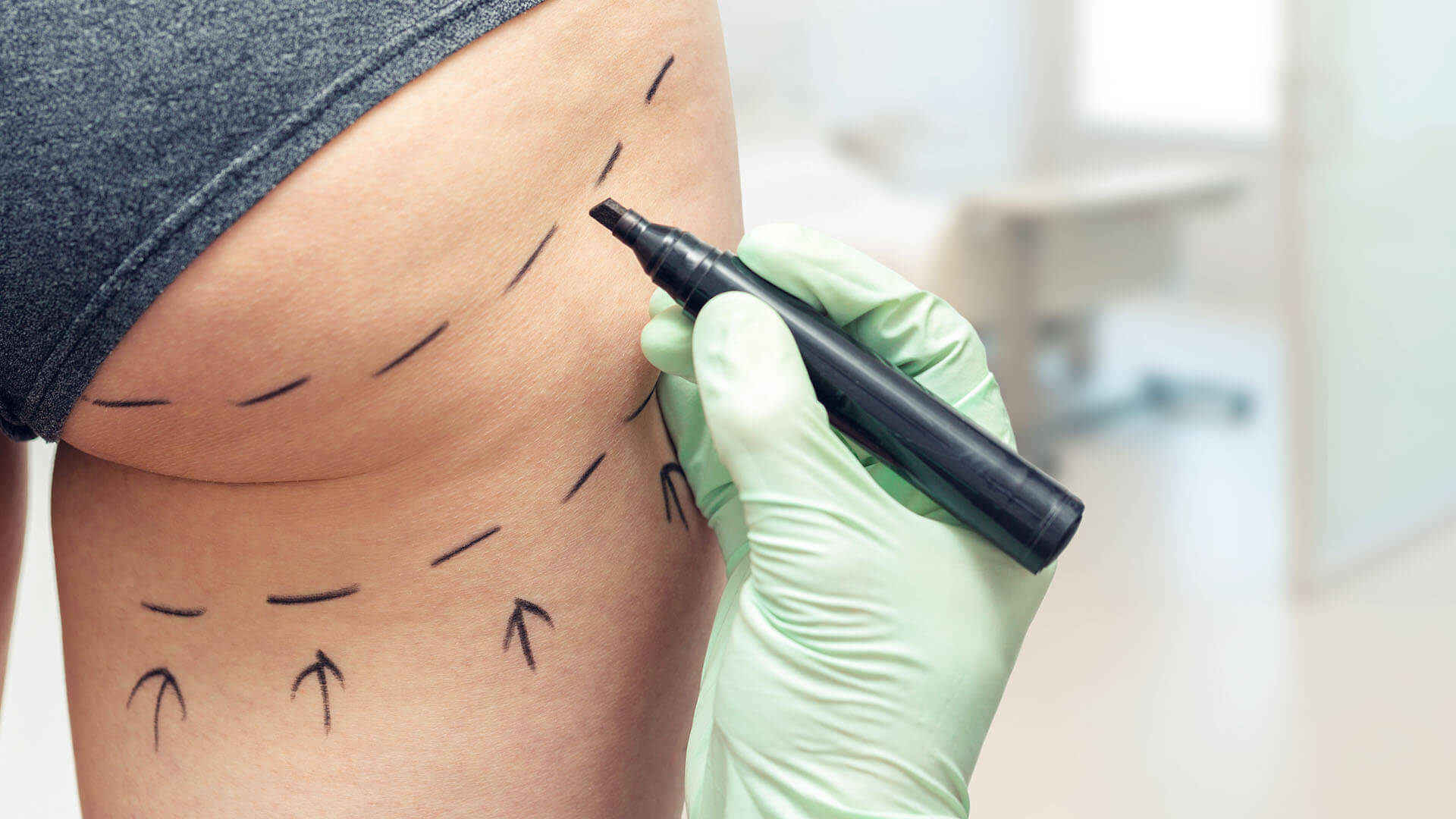Common Liposuction Misconceptions: Debunking Myths

In 2022, nearly half a million liposuction procedures were performed. What’s more, according to the American Society of Plastic Surgeons, liposuction has consistently ranked among the top five most-performed cosmetic surgical procedures in the United States year after year.
Liposuction is a popular cosmetic surgical procedure designed to remove excess fat deposits from specific areas of the body, such as the abdomen, thighs, arms, and neck. With body image and weight management becoming one of the most rising concerns, many turn to liposuction for help.
Yet, despite its prevalence, there are several liposuction misconceptions leading to confusion about its purpose, effectiveness, and potential risks. “Patients often say that they want liposuction to lose weight,” shares Dr. Ahmed Nasser, a plastic surgeon at The Plastic Surgery Center, “but liposuction doesn’t really work like that.”
This is just one of several common liposuction myths. Dr. Nasser explains five more common misconceptions about the reality behind what the procedure can actually accomplish in order for you to help make your liposuction decision.
Liposuction Myth #1: Liposuction is a Weight Loss Solution
“One of the most pervasive myths about liposuction is that it's an effective method for significant weight loss or obesity treatment, often leading people to view liposuction as a quick fix for shedding excess pounds,” Dr. Nasser adds.
In reality, liposuction is not designed or intended to be a weight loss procedure. In fact, it typically results in only modest weight reduction. The primary purpose of liposuction is body contouring — reshaping specific areas of the body by removing localized fat deposits that are resistant to diet and exercise.
According to Dr. Nasser, liposuction is not an effective weight loss solution due to the following reasons:
- Does not address lifestyle factors: Unlike comprehensive weight loss programs, liposuction does not address the underlying causes of weight gain, such as diet, exercise habits, or metabolism.
- Limited fat removal: During a typical liposuction procedure, only a few pounds of fat are removed. According to the American Society of Plastic Surgeons, the safest removal limit is usually around 5 pounds or fat or less to avoid complications. This is insignificant for someone seeking major weight loss.
- Not suitable for obese patients: Surgeons typically recommend liposuction for patients who are at or near their ideal body weight but have specific problem areas.
- Targets only subcutaneous fat: Liposuction removes subcutaneous fat, or fat just beneath the skin, rather than visceral fat, or fat surrounding internal organs, which is more closely associated with obesity-related health issues.
- Temporary results without lifestyle changes: After liposuction, fat can return or redistribute to other body areas without proper diet and exercise.
“Ultimately, individuals considering liposuction must understand that it's a body-sculpting tool, not a weight-loss method,” comments Dr. Nasser. “Sustainable weight loss is best achieved through a balanced diet and lifestyle modifications.”
Liposuction Myth #2: Liposuction Results are Permanent
Another common misconception about liposuction is that the results are permanent and that once fat is removed from an area, it will never return. This belief often leads people to view liposuction as a one-time solution for problem areas.
While liposuction permanently removes fat cells from the treated areas, the results are not necessarily permanent. The longevity of liposuction results depends largely on the patient's lifestyle choices and natural aging processes.
Liposuction results are usually impermanent as a result of:
- Aging effects: Natural aging processes can affect skin elasticity and fat distribution, potentially altering liposuction results over time.
- Fat redistribution: The body may compensate for the removed fat by storing new fat in other areas, including internal organs, which can lead to changes in overall body shape and potentially increase health risks.
- Hormonal changes: Pregnancy, menopause, and other hormonal shifts can affect fat storage and distribution, potentially impacting liposuction results.
- Lifestyle factors: Poor diet, lack of exercise, and other lifestyle factors can contribute to weight gain and new fat deposition, compromising liposuction results.
- Remaining fat cells can expand: Although liposuction removes many fat cells from the treated area, some fat cells remain. If a person gains weight, these remaining cells can enlarge, potentially affecting the contour achieved through liposuction.
Liposuction Myth #3: Liposuction Reduces Cellulite
Another common misconception is the idea that liposuction can help with cellulite. Unfortunately, liposuction is not an effective treatment for cellulite and, in some cases, may even make its appearance more noticeable.
This is because cellulite and fat accumulation have different causes. Cellulite is primarily the result of fibrous bands pulling down the skin, creating a dimpled appearance, which liposuction, which focuses on removing fat, doesn't address.
Liposuction also generally targets the deeper fat deposits beneath the skin, whereas cellulite affects the more superficial layers of fat, emphasizing the mismatch between the problem and the procedure. Another critical factor to consider is skin elasticity; rather than improving the appearance of cellulite, liposuction can sometimes exacerbate it, especially if the process leads to looser skin.
For these reasons, patients concerned about cellulite should discuss targeted treatments with their healthcare provider rather than getting liposuction for cellulite concerns.
Liposuction Myth #4: Liposuction is Done Only on the Stomach
“Most people only think of the abdominal area when they think of liposuction, but liposuction is a technique that can be applied almost anywhere,” says Dr. Nasser.
Many people mistakenly believe that liposuction is exclusively used to reduce abdominal fat. While the abdomen is a popular area for liposuction, the procedure can be performed on various parts of the body where stubborn fat accumulates, including:
- Arms
- Back, including the "bra roll" area
- Buttocks
- Calves and ankles
- Cheeks, jowls, and neck (facial liposuction)
- Chest (especially for men with gynecomastia)
- Hips and flanks ("love handles")
- Knees
- Neck and chin
- Thighs (both inner and outer thighs)
“Liposuction can also be performed on multiple areas during the same procedure, allowing for comprehensive body contouring,” shared Dr. Nasser. “The technique's versatility makes it adaptable to different body types and specific aesthetic goals.”
Liposuction Myth #5: Liposuction Provides Instant Results
Many believe that liposuction procedures cultivate instant, dramatic results. Unfortunately, this is another common misconception.
While liposuction does remove fat cells during the procedure, visible results are not instant. This is primarily because the recovery process and the body's natural healing mechanisms play a significant role in producing the final outcome.
In fact, the initial swelling can even obscure the results for weeks to months. While most patients see changes within 1-3 months, full results may take 6 months to a year to develop and heal.
During this time, skin retraction and compression garments play a role in healing, and bruising and numbness are common for many. Lifestyle choices can also impact the final outcome, and some patients may need multiple sessions for optimal results, especially for larger areas.
For these reasons, patients must have patience during the recovery process and maintain realistic expectations. According to Dr. Nasser, the best results often come from combining liposuction with a healthy lifestyle.
Liposuction Myth #6: It Causes Bold Liposuction Scarring
A final common misconception is that liposuction results in prominent, visible liposuction scarring. In reality, modern liposuction techniques typically result in minimal scarring, which is often barely noticeable once fully healed.
These are the factors that influence liposuction scarring:
- Comparison to other procedures: Liposuction generally produces less scarring than more invasive body contouring surgeries.
- Healing process: Most incisions heal well and fade significantly over time.
- Incision size: Liposuction incisions are usually very small, often only a few millimeters long.
- Individual factors: Genetics, skin type, and adherence to post-operative instructions affect scar appearance.
- Number of incisions: Multiple small incisions are often used instead of one large incision, distributing any potential scarring.
- Scar management: Post-operative care, including silicone sheets or gels, can further minimize scarring.
- Strategic placement: Surgeons typically place incisions in inconspicuous areas or natural skin folds.
- Technique: Advanced techniques like tumescent liposuction can reduce tissue trauma and scarring.
While some scarring is inevitable with any surgical procedure, liposuction scars are typically small and fade well over time. Patients should discuss their concerns about scarring with their surgeon, who can provide specific information based on the planned procedure and individual factors. Proper post-operative care and following the surgeon's instructions can help optimize healing and minimize the appearance of scars.
As. Dr. Nasser explains for those considering liposuction, “If you’re in good health already—with healthy eating and exercise habits—and you just want to target and contour a stubborn, troublesome area, then liposuction is a great tool.”
Take the first step towards a more confident you by scheduling a consultation for liposuction with our expert surgeons at The Plastic Surgery Center. Contact us at 833-615-2618 to schedule an appointment.
Click here to learn more about Dr. Nasser.
###
ABOUT THE BREAST CENTER OF NEW JERSEY
The Breast Center of New Jersey brings together world-renowned specialists across breast cancer prevention, diagnosis, and treatment disciplines to simplify, streamline, and improve access to life-changing care. Visit BCNJ.com to learn more about The Breast Center of New Jersey. Call 833-200-4009 to make an appointment.
Awards, Certificates, & Associations

